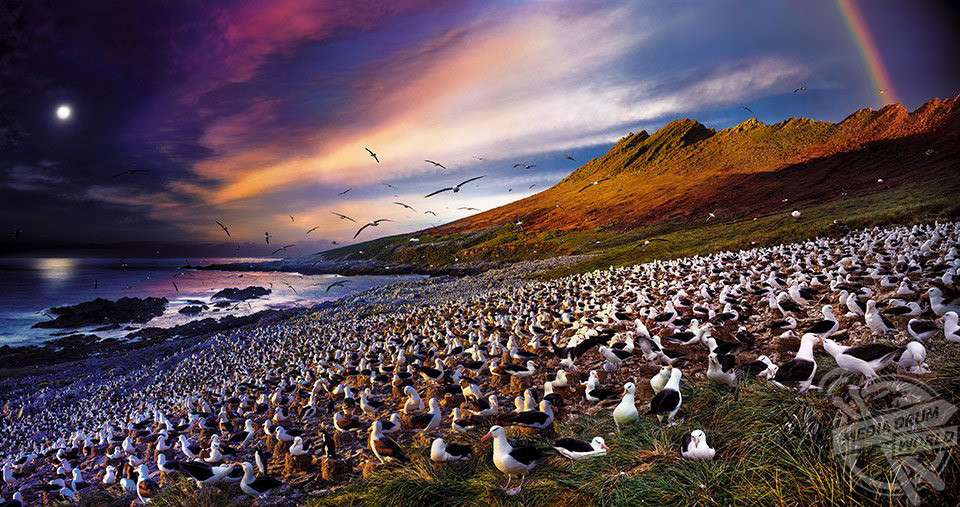
By Alex Jones
STUNNING photo composites capture breath-taking locations as they shift between day and night in a single image.
Incredible photos include a tantalising panoramic of New York and its unmistakable skyline; a couple tenderly embracing amongst the hustle and bustle of Trafalgar Square; and hundreds of diverse animal species sharing one watering hole in the Serengeti National Park.

mate for life,” said Stephen Wilkes.Mediadrumimages/StephenWilkes/Taschen
Another striking image shows the real beauty of the Falkland Islands and its resident albatrosses.
Usually a photo will capture a moment, a static snapshot in time.
But in Stephen Wilkes fascinating new book Day To Night, with a foreword by acclaimed critic Lyle Rexer, the American photographer has merged hundreds of different images from the exact same spot to create a “living, breathing account” of the distinct landscapes.

“Day to Night has been a 10-year personal journey to capture fundamental elements of our world through the hourglass of a single day,” he explained.
“It is a synthesis of art and science, an exploration of time, memory, and history through the 24-hour rhythms of our daily lives. I photograph from locations and views that are part of our collective memory. Working from a fixed camera angle, I capture the fleeting moments of humanity and light as time passes. After photographing as many as 1,500 single images, I select the best moments of the day and night. Using time as my guide, all of these moments are then seamlessly blended into a single photograph—a visualisation of our conscious journey with time.”

Vast and extraordinarily detailed, Wilkes’ images capture not just the location, but rather a day in the life of that location. Wilkes’ process is intensive, the editing painstaking, and the choices agonising. The landmarks become our shared heritage, not as frozen, immovable images, but as steadfast bastions of a living, evolving humanity.
“In a world where humanity has become obsessively connected to personal devices, the ability to look profoundly and contemplatively is becoming an endangered human experience,” Wilkes continued.

“Photographing a single place for up to 36 hours becomes a meditation. It has informed me in a unique way, inspiring deep insights into life’s narrative, and the fragile interaction of humanity within our natural and constructed world.”
Stephen Wilkes’ Day To Night, published by TASCHEN, is available now.





